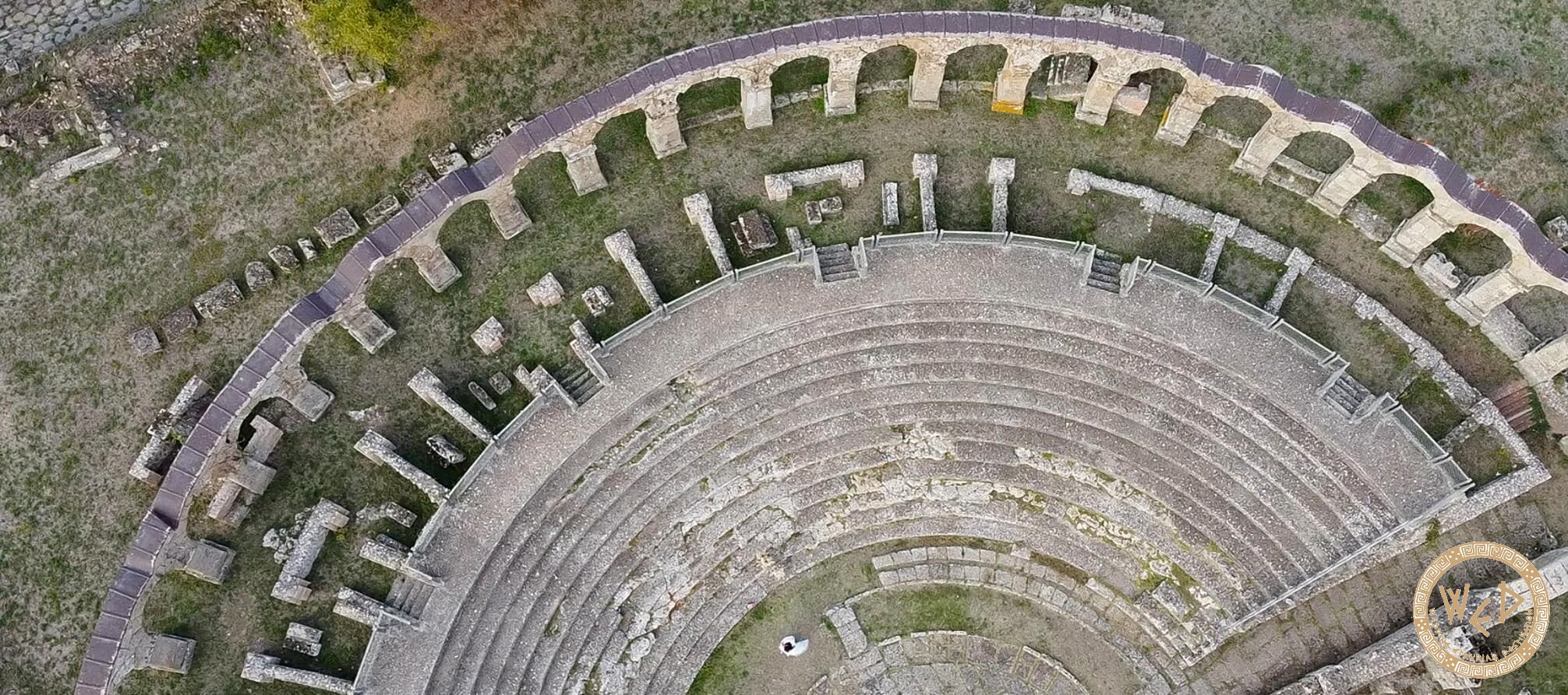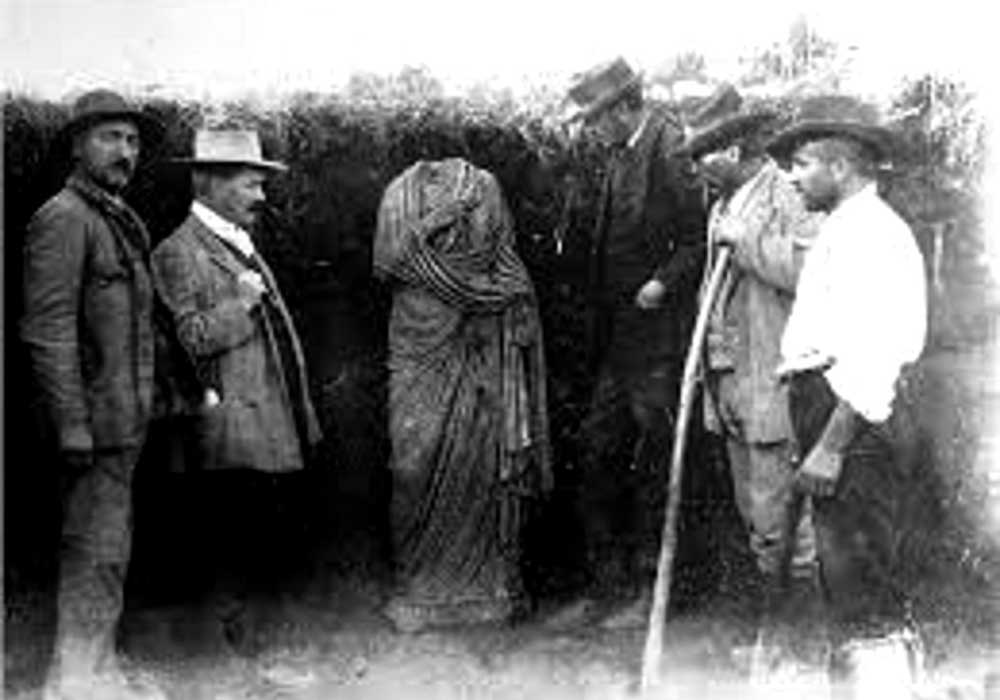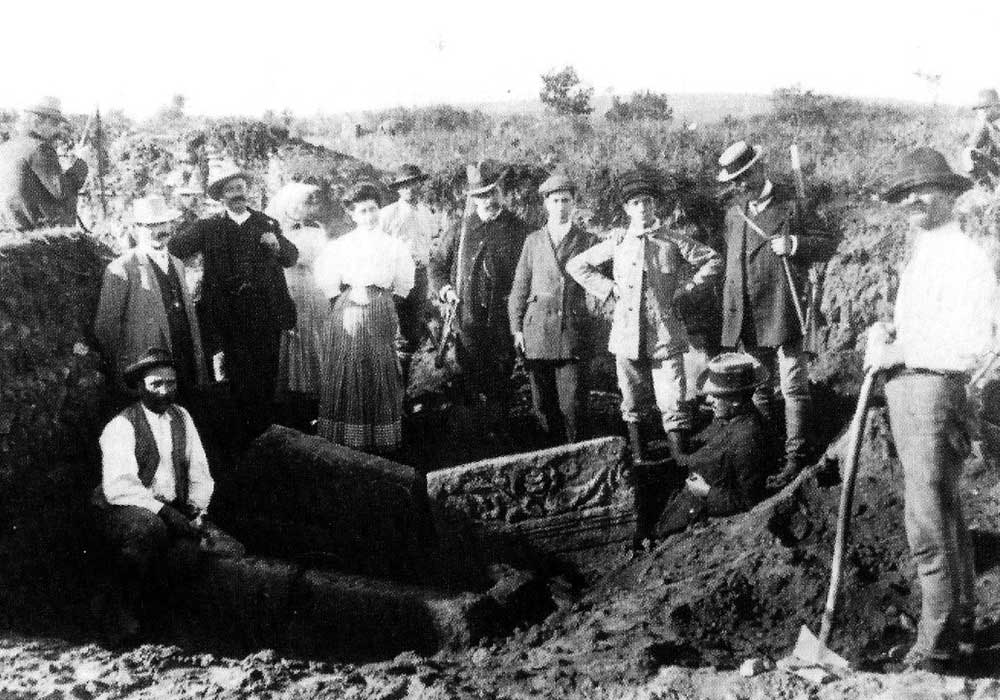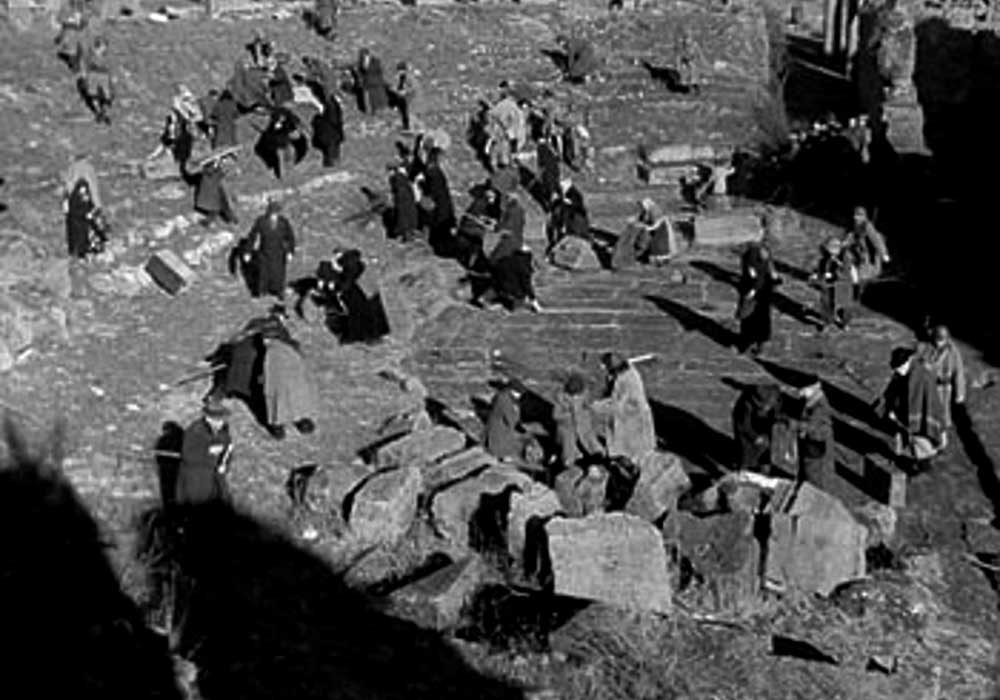
Ferento is not just a location…
Ferento is IDENTITY, BEAUTY AND DREAM!
Ferento is an ancient Etruscan, Roman and medieval city near Viterbo. It is located on Teverina road towards the Tiber valley and was adorned with the title of civitas splendissima, as an inscription from the 2nd century AD found nearby reminds us.
Ferento was originally an Etruscan city, though it acquired immense importance especially in the
imperial age. It became an important node on the Via Clodia and was structured according to the urban fabric, which today is only minimally recoverable from archaeological excavations.
The Etruscan settlement was established in the 4th century BC between the Vezzarella and Fosso dell’Acquarossa streams. With the Roman conquest of the territory north of the Cimini mountains in 310 BC, the Ferento area entered the sphere of influence of Rome.
Today it holds the same value as it did ages before, a display of divine beauty and the perfect setting for precious events.
“The theatry”
During the Augustan age the Amphitheater, the Forum, the Augusteum and the magnificent Theater were built. The public baths and the restructuring of the Theater date back to the second century.
Theatrical performances took place during games and festivals. On some occasions, religious ceremonies, military triumphs, chariot races, gladiator fights and acrobatic shows and dances took place as well.
“History of Excavations”
The primary evidence of excavations on the site dates back to 1588. However, the first real interventions were carried out at the beginning of the 19th century. The Academy of Sciences and Arts of the Ardenti of Viterbo, in the Etruscan-Roman necropolis of the nearby localities on the Ferento plateau began this initiative.
In 2009, the Convention for the enhancement and use of the archaeological area of Ferento reaffirmed the archaeological importance of this unique site, and today it can be visited thanks to the volunteers of Archeotuscia Onlus.

Ferento is an ancient Etruscan, Roman and medieval city near Viterbo. It is located on Teverina road towards the Tiber valley and was adorned with the title of civitas splendissima, as an inscription from the 2nd century AD found nearby reminds us.
Ferento was originally an Etruscan city, though it acquired immense importance especially in the
imperial age. It became an important node on the Via Clodia and was structured according to the urban fabric, which today is only minimally recoverable from archaeological excavations.
The Etruscan settlement was established in the 4th century BC between the Vezzarella and Fosso dell’Acquarossa streams. With the Roman conquest of the territory north of the Cimini mountains in 310 BC, the Ferento area entered the sphere of influence of Rome.
Today it holds the same value as it did ages before, a display of divine beauty and the perfect setting for precious events.

During the Augustan age the Amphitheater, the Forum, the Augusteum and the magnificent Theater were built. The public baths and the restructuring of the Theater date back to the second century.
Theatrical performances took place during games and festivals. On some occasions, religious ceremonies, military triumphs, chariot races, gladiator fights and acrobatic shows and dances took place as well.

The primary evidence of excavations on the site dates back to 1588. However, the first real interventions were carried out at the beginning of the 19th century. The Academy of Sciences and Arts of the Ardenti of Viterbo, in the Etruscan-Roman necropolis of the nearby localities on the Ferento plateau began this initiative.
Nel 2009, la Convenzione per la valorizzazione e fruizione dell’area archeologica di Ferento ha ribadito l’importanza archeologica di questo sito unico e oggi questo è visitabili grazie ai volontari di Archeotuscia.
Wedding Etrurian Destination